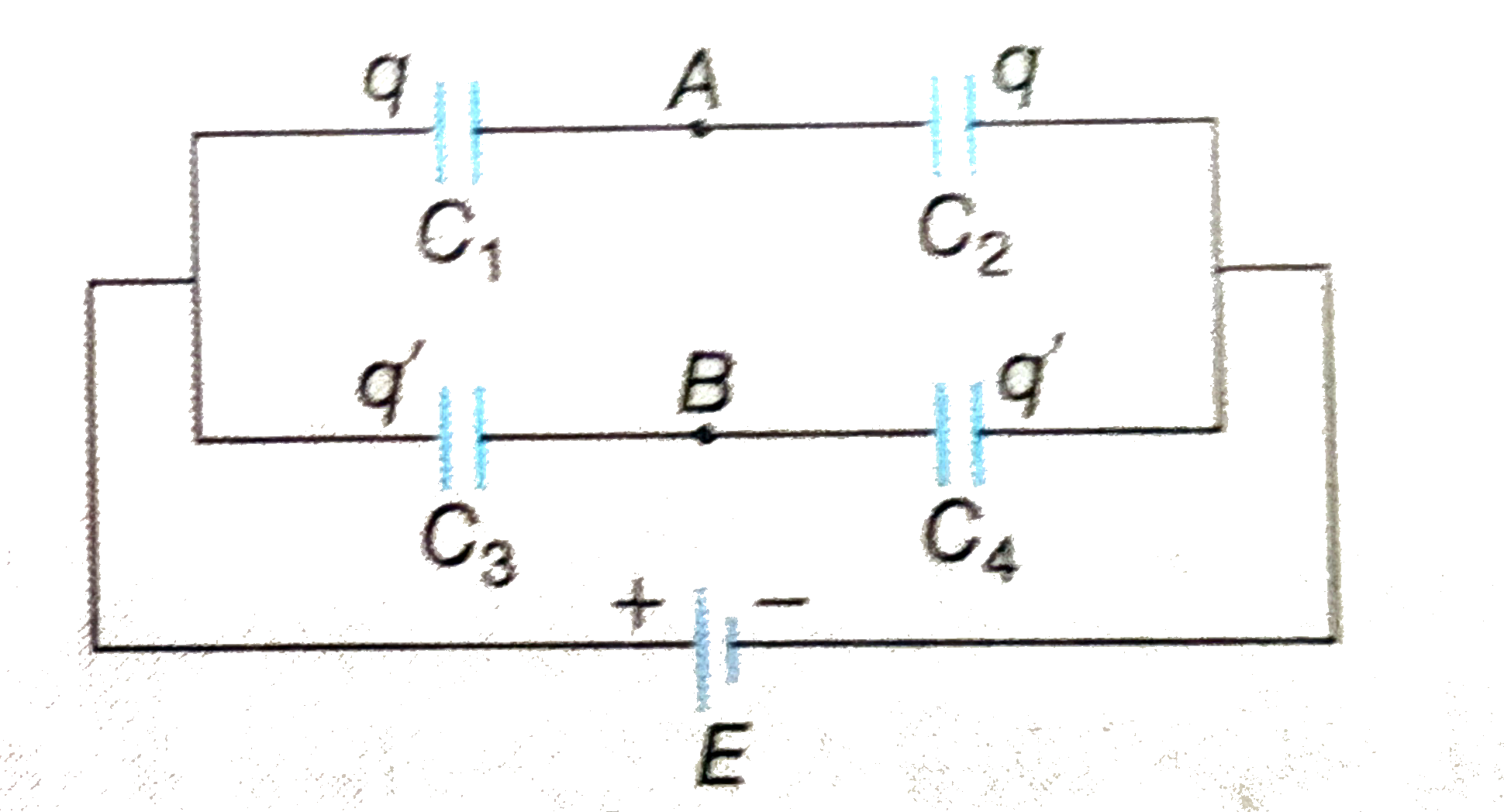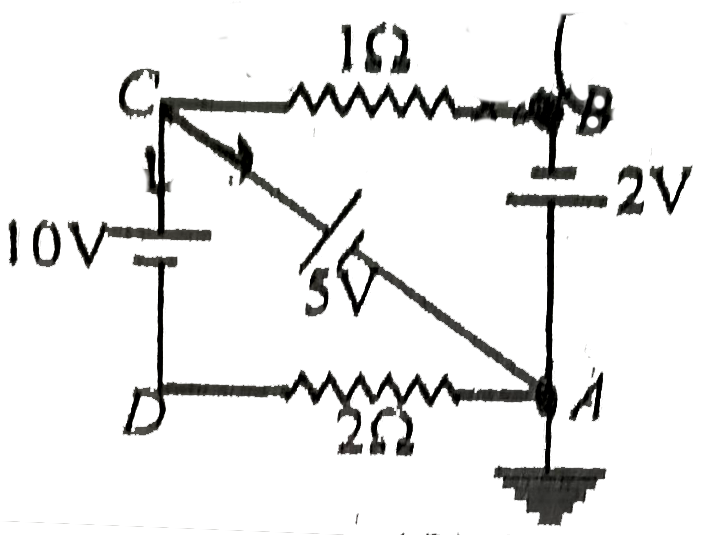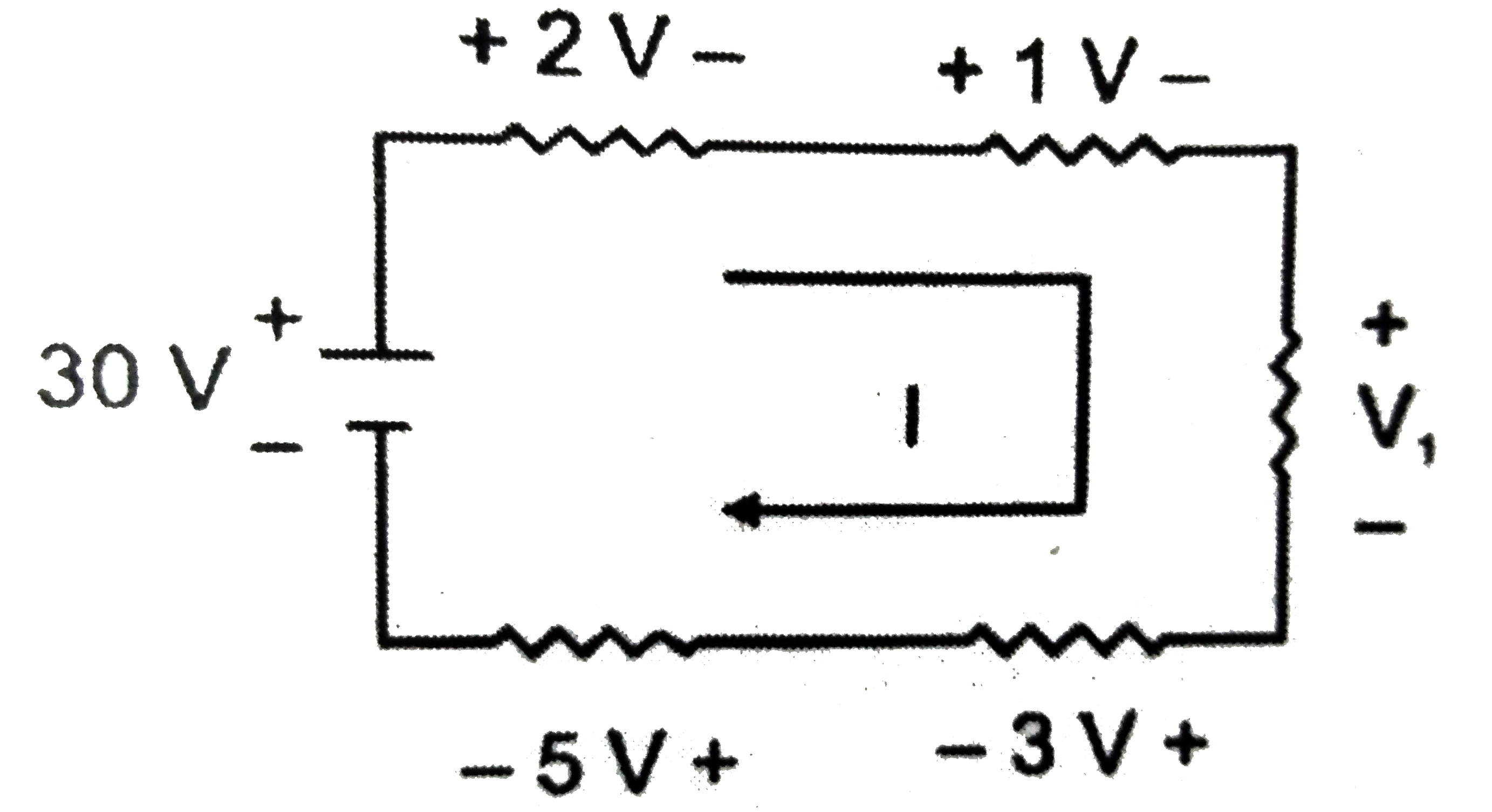In the given circuit , determine the condition for which VA−VB=0?

The capacitors in series have the same charge . So applying Kirchhoff's second law to the loop cotaining C1,C2 and E we get ,
qC1+qC2−E=0
or, q=E[C1C2C1+C2]
Similarly applying Kirchhoff's law to the loop containing C3,C4 and E we get ,
q'C3+q'C4−E=0
or, q=E[C3C2C3+C4]
Now , VA−VB=qC2−q'C4=E[C1C1+C2−C3C3+C4]
E[C1C4−C3C2(C1+C2)(C3+C4)]
For, VA−VB=0,C1C4−C2C3=0
or, C1C2=C3C4
Topper's Solved these Questions
- BOOK - CHHAYA PUBLICATIONCHAPTER - KIRCHHOFF'S LAWS AND ELECTRICAL MEASUREMENT EXERCISE - NCERT TEXTBOOK QUESTIONS WITH ANSWER HINT10videos
KIRCHHOFF'S LAWS AND ELECTRICAL MEASUREMENT
- BOOK - CHHAYA PUBLICATIONCHAPTER - KIRCHHOFF'S LAWS AND ELECTRICAL MEASUREMENT EXERCISE - NCERT EXEMPLAR QUESTIONS WITH ANSWER HINT (MCQ -1)2videos
KIRCHHOFF'S LAWS AND ELECTRICAL MEASUREMENT
- BOOK - CHHAYA PUBLICATIONCHAPTER - KIRCHHOFF'S LAWS AND ELECTRICAL MEASUREMENT EXERCISE - Section Related Questions14videos
KIRCHHOFF'S LAWS AND ELECTRICAL MEASUREMENT
- BOOK - CHHAYA PUBLICATIONCHAPTER - ELEMENTARY PHENOMENA OF ELECTROSTATICS EXERCISE - EXAMINATION ARCHIVE2videos
ELEMENTARY PHENOMENA OF ELECTROSTATICS
- BOOK - CHHAYA PUBLICATIONCHAPTER - LIGHT WAVE AND INTERFERENCE OF LIGHT EXERCISE - CBSE SCANNER15videos
LIGHT WAVE AND INTERFERENCE OF LIGHT
Similar Questions
Knowledge Check
- Question 1 - Select One
In the circuit element given here, if the potential at point B=VB=0, then the potentials of A and D are given as
 AVA=−1.5V,VD=+2VBVA=+1.5V,VD=+2VCVA=+1.5V,VD=+0.5VDVA=+1.5V,VD=−0.5V
AVA=−1.5V,VD=+2VBVA=+1.5V,VD=+2VCVA=+1.5V,VD=+0.5VDVA=+1.5V,VD=−0.5V - Question 2 - Select One
In the circuit shown in the figure, the ratio of VB as VC is
 A−2/5B−5/2C1D1/3
A−2/5B−5/2C1D1/3

In the given circuit the point A is 9 V higher than point B.View Solution
In the given circuit the point A is 9 V higher than point B.View SolutionIn the given circuit find the |VA−VB| where VA,VB are electric potentials at the points A and B.
 View Solution
View SolutionIn the circuit element given here, if the potential at point B=VB=0, then the potentials of A and D are given as
 View Solution
View SolutionIn the circuit shown in figure four capacitors are connected to a battery. Determine the potential difference VM−VN between· points M and N of the circuit. Find the conditions under which it is equal to zero.
 View Solution
View SolutionFor the circuit shown in figure, determine the unknown voltage drop V1.
 View Solution
View Solution

